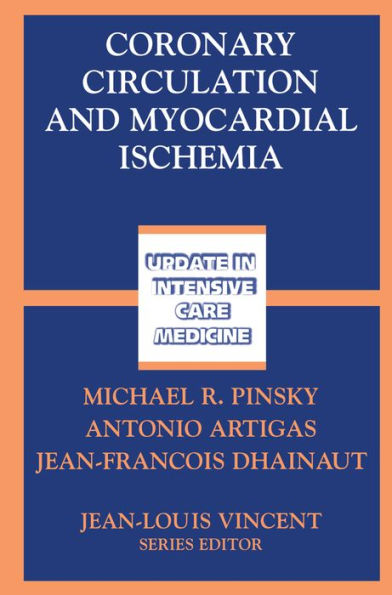The coronary circulation is central to sustaining myocardial viability. Unlike the cir culations of most other organs, if the coronary circulation becomes insufficient to sustain myocardial contractile function, overall quality of life rapidly declines and life can abruptly end. In partnership with the cerebral circulation, the coronary circula tion plays a central role in sustaining life. However, unlike the cerebral circulation, whose function is self-sufficient to define life, the coronary circulation determines global blood flow and thus the initial state for the remainder of the body. This unique condition, together with the reality that coronary artery disease primarily affects peo ple in their productive years of life, has allowed physicians and scientists who study the heart to enjoy a privileged position in the field of medical research and clinical practice. Thus, it comes as little surprise that many new and exciting research developments involving the coronary circulation have recently come to the forefront of medical thinking. This reality, coupled with the large number of clinical trials of agents specif ically designed to sustain or improve coronary flow in many disease states, makes the timing of this monograph relevant. The book features papers presented at a recent international symposium, the fourth in a series of meetings on Applied Physiology of the Peripheral Circulation. The papers selected by the editors review the most impor tant advances in the fields of cardiology and the coronary circulation.
"1100828890"
Coronary Circulation and Myocardial Ischemia
The coronary circulation is central to sustaining myocardial viability. Unlike the cir culations of most other organs, if the coronary circulation becomes insufficient to sustain myocardial contractile function, overall quality of life rapidly declines and life can abruptly end. In partnership with the cerebral circulation, the coronary circula tion plays a central role in sustaining life. However, unlike the cerebral circulation, whose function is self-sufficient to define life, the coronary circulation determines global blood flow and thus the initial state for the remainder of the body. This unique condition, together with the reality that coronary artery disease primarily affects peo ple in their productive years of life, has allowed physicians and scientists who study the heart to enjoy a privileged position in the field of medical research and clinical practice. Thus, it comes as little surprise that many new and exciting research developments involving the coronary circulation have recently come to the forefront of medical thinking. This reality, coupled with the large number of clinical trials of agents specif ically designed to sustain or improve coronary flow in many disease states, makes the timing of this monograph relevant. The book features papers presented at a recent international symposium, the fourth in a series of meetings on Applied Physiology of the Peripheral Circulation. The papers selected by the editors review the most impor tant advances in the fields of cardiology and the coronary circulation.
41.49
In Stock
5
1

Coronary Circulation and Myocardial Ischemia

Coronary Circulation and Myocardial Ischemia
eBook (2000)
$41.49
$54.99
Save 25%
Current price is $41.49, Original price is $54.99. You Save 25%.
Related collections and offers
41.49
In Stock

Product Details
| ISBN-13: | 9783642572128 |
|---|---|
| Publisher: | Springer-Verlag New York, LLC |
| Publication date: | 12/06/2012 |
| Series: | Update in Intensive Care Medicine |
| Sold by: | Barnes & Noble |
| Format: | eBook |
| File size: | 5 MB |
About the Author
From the B&N Reads Blog
